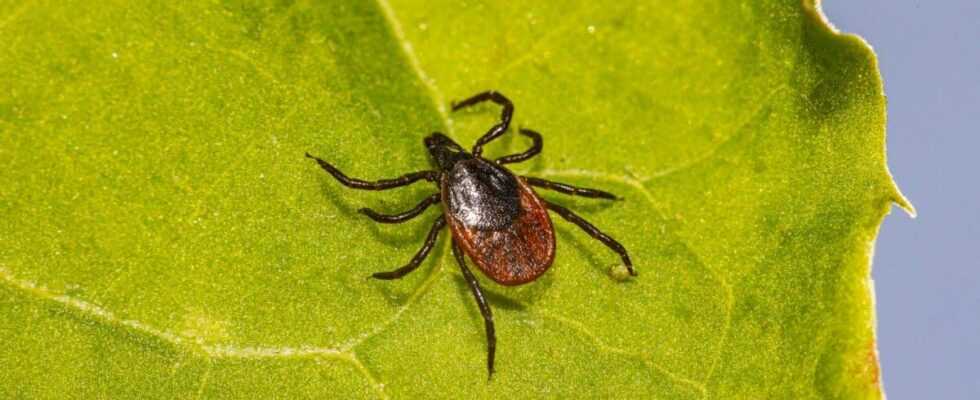Nearly a third of French people have already been bitten by a tick, according to a barometer from Public Health France published this Tuesday morning. In 2019, 30% of the population said they had been bitten by a tick in their lifetime and 6% in the last 12 months, up from 2016 (25% and 4% respectively). In 2019, 25% of the population felt exposed to tick bites compared to 23% in 2016.
A slight increase in the proportion of people reporting a tick bite in the last 12 months was observed between 2016 and 2019. An increase in the incidence of Lyme disease has also been noted in recent years. An increase that Public Health France links “in part” to “better awareness of the population” since 2016.
An increase in bites
That year, the Ministry of Health set up information campaigns, under pressure from associations of Lyme patients, wishing to take better account of the disease caused by infected tick bites.
As part of a national plan, prevention campaigns have been implemented by the regional health agencies (ARS), Public Health France and patient associations, through radio, video, posters, signs on the outskirts of forests or awareness-raising documents for health professionals.
These measures have had an impact on the population, according to Public Health France. The proportion of people who have heard of the disease increased from 66% in 2016 to 79% in 2019, as well as the proportion of people feeling well informed (from 29% to 41%).
A larger proportion of the population reported applying preventive measures against tick bites and these measures were applied more by people aged 55 and over, by women and by people living in high incidence regions, according to SPF .
Where do we get bitten?
Mostly in the forest (52%), but also on the edge of meadows and meadows (22%) and in a garden (16%). The proportion of tick bites is higher among people working outdoors, such as farmers, notes the study by Santé Publique France.
“Data from the literature are scarce on the proportion of cases attributed to occupational exposure. Nevertheless, a high seroprevalence of anti-Borrelia antibodies had been demonstrated in forest workers: 14.1% in the North-East of France in 2003 and 15.2% in Île-de-France in 1997”. watch the study.
How do we protect ourselves?
“Of those who felt exposed, 18% used repellents, 54% inspected their bodies for ticks and 73% wore protective clothing. These results suggest a fairly good acceptance of these means of protection. However, these measures are not systematically applied: only 34% of the population often looked for ticks after exposure and 57% often used protective clothing. », Note SPF.
Among people who had been bitten by a tick, 67% used a tick remover or tweezers to remove the tick, “but 24% used non-recommended methods such as oil, ether or other products, while no study has demonstrated their effectiveness”, notes Public Health France.
The agency also recommends reinforcing the information messages on the identification of the signs of the disease. “Erythema migrans was not identified as the first symptom of the disease by 32% of the population having already heard” of the disease, while “early detection of the first signs and a consultation with a doctor are essential to prevent the development of disseminated forms of the disease”.
